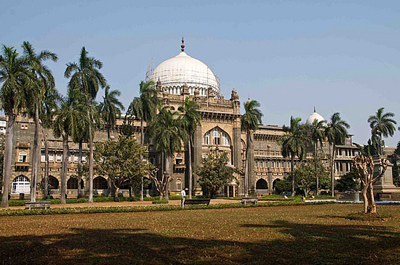| |
Origin of Vaastu
|
The concept of consulting a Vastu
expert, for creating peaceful settings at home and
workplace, is quite popular today. However, unlike
what most people tend to believe, this scientific
study of directions, for architectural purposes, is
not new. In fact, it has its origin in the Sthapatya
Veda, a part of the Atharva Veda, which dates back to
thousand of years ago. The early principles of Vastu
were framed on the basis of observation of the
sunrays, at different times in the day. These
observations were noted and important inferences drawn
later on, on the basis of an in-depth screening.
|
|

|
The origin of vaastushastra may have taken place
well over thousands of years ago. The learned men of those days
may not have lived in houses themselves but they most definitely
dedicated their lives to the development of the science "vaastushastra"
or "vaastu", as it is popularly known today.
The principles of the science laid down during
those days were based purely on the effect of sunrays during
different times of the day. The observations and corrections made
were noted and concluded only after in-depth screening of the
situation.
Vastu is a part of Vedas, which are believed to
be four to five thousand years old. Through penance and meditation
yogis of that period acquired answers believed to have come from
the cosmic mind itself to their questions. Hence Vedas are heeded
with divine knowledge. The art of Vastu originates in the Stapatya
Veda, a part of the Atharva Veda.
It used to be a purely technical subject and it was only confined
to architects (Sthapatis) and handed over to their heirs. The
principles of construction, architecture, sculpture etc., as
enunciated in the epics and treatise on temple architecture, have
been incorporated in the science of vastu. Its description is
there in epics like Mataysya Purana, Skanda Purana, Agni Purana,
Garuda Purana, and Vishnu Purana. There are some other ancient
shastras that pass over the knowledge of vastu shastra to next
generation, like Vishvakarma Prakash, Samraangan Sutradhar,
Kashyap Shilpshastra, Vrihad Sanhita, and Praman Manjaree.
Vastu study incorporates within itself the
principles of sculptures, construction and architecture, as they
have been described in the epics. One can find its mention in
different epics, like Mataysya Purana, Skanda Purana, Agni Purana,
Garuda Purana, and Vishnu Purana. From ancient literature, it is
found that that the construction of various temples and
architectures like temples and palaces was based on Vastu only.
There are many ancient shastras, like Vishvakarma Prakash,
Samraangan Sutradhar, Kashyap Shilpshastra, Vrihad Sanhita, and
Praman Manjaree, which pass over the Vastu knowledge to the next
generation.

Chhatrapati Shivaji Maharaja Vastu
Sangrahalaya, formerly Prince of Wales Museum of Western India,
Mumbai.
References to Vastu Shastra can also be found in the Mahabharata.
The epic tells that when kings were invited to the city of
Indraprastha, for the Rajasuya Yagna of King Yuddhistira, a number
of houses were built, all of which followed Vastu guidelines.
These houses were free from obstructions and had big compounds
with great walls. The symmetry of various elements required for
the construction of the palace was also taken into consideration.
Even the mayasabha of the Mahabharata was built according to the
ancient principles of Vastu Shastra.
Vastu finds mention in Ramayana as well. The construction of the
holy city of Ayodhya, where Lord Rama was born and ruled, shared a
similarity with the plan written in the great architectural text
Manasara. Even the Ramsetu of Ramayana was based on Vastu
principles. Buddhist literature also makes numerous mentions of
buildings based on Vastu. It is said that Lord Buddha used to
deliver discourses on architecture and he was very much conscious
of the construction of the buildings in order. There is a mention
of various viharas, temples, houses, buildings in the various
Buddhist texts, based on vastu.
Great Ancient Works Based On Vastu
Shastra
- Vishwakarma Vastu Shastra
- Samarangana Sutradhar
- Mandana Sutradhar
- Rajasimha Vastu
- Deeparnava
- Shilparatna
- Mayamata
- Manasara
- Manushyalaya Chandrika
- Kashyapa Shilpa
- Aparajita Pricha
In the Mahabharata it is said a number of houses
were built for the kings who were invited to the city Indraprastha
for the Rajasuya Yagna of King Yuddhistira. Sage Vyasa says that
these houses were as high as the peaks of Kailasa mountains,
perhaps meaning that they stood tall and majestic. The houses were
free from obstructions, had compounds with high walls and their
doors were of uniform height and inlaid with numerous metal
ornaments. It is said that the site plan of Ayodhya, the city of
Lord Rama was similar to the plan found in the great architectural
text Manasara. References are also to be found in Buddhist
literature, of buildings constructed on the basis of Vastu. They
contain references to individual buildings. Lord Buddha is said to
have delivered discourses on architecture and even told his
disciples that supervising the construction of a building was one
of the duties of the order. Mention is made of monasteries (Viharas)
or temples, buildings which are partly residential and partly
religious (Ardhayogas), residential storeyed buildings (Prasadas),
multi-storeyed buildings (harmyas) and Guhas or residential
buildings for middle class people.
The Vastu, with word meaning 'dwelling', is believed to be the
residing places of god and man. According to its modern meaning it
covers all buildings irrespective of their use like residences,
industries, business establishments, lodges, hotels etc. It is
based on the five basic and essential elements, such as Vayu
(air), Agni (fire), Jal (water), Bhumi (earth) and Aakasha
(space), which are known as Panchabhutas. Everything on earth is
built from these elements.
CLICK
HERE FOR PRINCIPLES AND TIPS OF VAASTU ARCHITECTURE
CLICK
HERE TO KNOW OUR SERVICES AND CHARGES
Rameshwar Prasad
invites you to the Wonderful World of Vaastu
|

|
CONTACT
THE CONSULTANT
Engineer R. Prasad (B.Tech., M.Tech., P.G.D.C.A.,
P.G.D.M.) VAASTU INTERNATIONAL
49 C (Second Floor), Pocket- B, SFS
Flats,
Mayur Vihar,
Phase-III,
New Delhi - 110096,
INDIA
TeleFax : +91-11-22615299 (Landline), Mobile : +91- 9810105218
e-mail : vaastuinternational@yahoo.com
vaastuinternational@gmail.com
|
Languages  English English  Franšais Franšais  Espa˝ol Espa˝ol  Deutsch Deutsch  Italiano Italiano  Portugues Portugues
|










